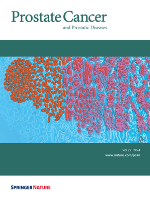
PROSTATE CANCER AND PROSTATIC DISEASES
Scope & Guideline
Advancing knowledge in prostate health and disease.
Introduction
Aims and Scopes
- Clinical Management and Treatment Strategies:
The journal emphasizes research on various treatment modalities for prostate cancer, including surgical techniques, radiation therapy, and hormonal treatments, aimed at improving clinical outcomes and patient quality of life. - Diagnostic Innovations:
There is a strong focus on the development and validation of diagnostic tools, such as imaging techniques (e.g., MRI, PSMA PET) and biomarkers, which are crucial for early detection and accurate staging of prostate cancer. - Patient-Centered Research:
The journal highlights studies that address patient experiences, decision-making processes, and the psychosocial aspects of prostate cancer treatment, emphasizing the importance of patient-reported outcomes. - Epidemiology and Health Disparities:
Research addressing the epidemiology of prostate cancer, including risk factors, health disparities among different populations, and the impact of socioeconomic factors on treatment access and outcomes, is a key area of interest. - Translational Research and Precision Medicine:
The journal supports studies that bridge laboratory research and clinical application, focusing on personalized medicine approaches, genetic profiling, and the role of molecular markers in treatment response. - Multidisciplinary Approaches:
The journal encourages collaborative research that integrates insights from urology, oncology, radiology, pathology, and other disciplines to advance comprehensive care strategies for prostate cancer patients.
Trending and Emerging
- Advanced Imaging Techniques:
There is a growing emphasis on the use of advanced imaging modalities, such as multiparametric MRI and PSMA PET scans, for the detection, staging, and monitoring of prostate cancer, reflecting technological advancements in diagnostics. - Biomarker Development and Precision Oncology:
Research focused on the identification and validation of biomarkers for prostate cancer prognosis and treatment response is on the rise, highlighting the trend towards precision medicine and individualized treatment strategies. - Health Disparities and Societal Impact:
Emerging studies addressing health disparities in prostate cancer incidence, treatment access, and outcomes among different racial and ethnic groups indicate a growing awareness of the social determinants of health. - Integration of Artificial Intelligence in Diagnostics:
The application of artificial intelligence and machine learning in improving diagnostic accuracy and treatment planning for prostate cancer is a rapidly emerging area, reflecting the increasing intersection of technology and healthcare. - Holistic and Multidisciplinary Care Approaches:
There is a trend towards research that emphasizes holistic care, integrating psychological support, lifestyle interventions, and patient education into the management of prostate cancer, indicating a shift to more comprehensive patient care models.
Declining or Waning
- Traditional Surgical Techniques:
There has been a noticeable reduction in publications focused solely on traditional surgical techniques for prostate cancer, as newer minimally invasive and robotic-assisted approaches gain traction and research emphasis. - Basic Science and Laboratory Studies:
Research articles centered on basic science and laboratory studies without direct clinical application have seen decreased representation, possibly due to a shift towards translational research that directly impacts patient care. - General Population Studies:
Publications investigating general population trends in prostate cancer incidence and treatment have declined, suggesting a shift towards more targeted studies that focus on specific populations or high-risk groups. - Historical Treatment Approaches:
As new therapies and methodologies emerge, there is less emphasis on historical treatment approaches that have been largely supplanted by more effective options, leading to fewer studies in this area. - Non-Oncological Prostate Conditions:
Research on benign prostatic hyperplasia and other non-cancerous prostate conditions appears to be waning, as the journal increasingly prioritizes studies that focus on prostate cancer and oncological outcomes.
Similar Journals
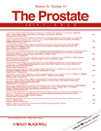
PROSTATE
Leading the charge in prostate health research.PROSTATE is a premier, peer-reviewed journal published by Wiley, focusing on the critical fields of urology and oncology. With an established history since 1980 and a projected convergence through 2024, this influential journal serves as a vital resource for researchers, clinicians, and students alike. It holds a prestigious position in the academic landscape, classified in the Q1 category for Urology and Q2 in Oncology as of 2023, demonstrating its significant contribution to these disciplines. With a Scopus rank of #23 in Urology and #169 in Oncology, PROSTATE is pivotal for advancing knowledge and fostering innovation in prostate research, treatment, and overall male health. The journal aims to publish high-quality original articles, reviews, and clinical studies that address the complexities of prostate-related conditions, ultimately seeking to improve patient outcomes and propagate best practices in the medical community.
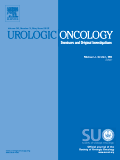
UROLOGIC ONCOLOGY-SEMINARS AND ORIGINAL INVESTIGATIONS
Advancing urologic cancer care through innovative research.Urologic Oncology - Seminars and Original Investigations is a premier journal published by Elsevier Science Inc, dedicated to advancing the field of urologic oncology through high-quality, peer-reviewed research and insightful scholarly discussions. With an ISSN of 1078-1439 and an E-ISSN of 1873-2496, this journal has established itself as a vital resource for professionals, researchers, and students alike since its inception in 1995. Currently holding a Q2 ranking in Oncology and a prestigious Q1 in Urology for 2023, it ranks 28th out of 120 in Urology and 177th out of 404 in Oncology within Scopus, underscoring its relevance and impact in these critical fields. While the journal operates under a subscription model, it continues to deliver compelling and transformative research aimed at enhancing patient outcomes in urologic oncology. With a focus on innovative therapies, diagnostic advancements, and clinical trials, the journal contributes significantly to ongoing dialogue and development in urologic health care.
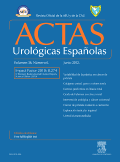
Actas Urologicas Espanolas
Elevating Standards in Urology ResearchActas Urologicas Espanolas is a prestigious journal published by Elsevier España, dedicated to the field of Urology. Established in 1977, this journal has significantly contributed to advancing knowledge and research in urological medicine and surgery, spanning a comprehensive scope that includes clinical studies, surgical techniques, and the latest innovations in the treatment of urological diseases. With an impact factor reflecting its critical role in the academic community, it is ranked Q3 in the Urology category as of 2023, placing it amongst the valuable resources for professionals and researchers. The journal is indexed under Scopus, achieving a commendable rank of #70 out of 120 in the Medicine-Urology category, situating it within the 42nd percentile. As a significant platform for sharing advancements and findings, it encourages submissions that enhance urological care and improve patient outcomes. Although not an Open Access journal, the publication remains vital for those looking to stay updated on the latest developments in urology. For more details, visit their office located at CALLE DE ZURBANO, 76-4TH FLR LEFT, MADRID, 28010, SPAIN.

Urologia Journal
Exploring Innovations in Urology Since 1947.Urologia Journal, with ISSN 0391-5603 and E-ISSN 1724-6075, is a pivotal publication in the field of urology, published by SAGE Publications Ltd. Established in the United States, the journal has a rich historical foundation, with coverage spanning various periods beginning in 1947 and continuing to the present day, indicating its commitment to chronicling advancements in urological research and practice. As of 2023, the journal has achieved a respectable Q3 ranking in the field of Urology, reflecting its increasing influence and relevance among academic peers. Though not an open-access journal, it provides substantial value to its readers with rigorous peer-reviewed content that enhances the understanding and treatment of urological conditions. Researchers, clinicians, and students are encouraged to engage with the Urologia Journal to keep abreast of the latest findings and methodologies that contribute to better patient care and innovative therapeutic options in urology. As the field evolves, Urologia Journal remains committed to promoting quality scholarship and disseminating vital knowledge that shapes the future of urology.
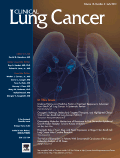
Clinical Lung Cancer
Innovative insights for the future of pulmonary medicine.Clinical Lung Cancer is a prestigious journal published by CIG MEDIA GROUP, LP, dedicated to advancing the field of oncology and pulmonary medicine since its establishment in 2000. With an impressive impact factor and high ranking within its fields—achieving Q1 status in Oncology and Pulmonary and Respiratory Medicine in 2023—this journal serves as a vital resource for researchers, clinicians, and students alike. Covering a wide scope of topics related to lung cancer, Clinical Lung Cancer offers a platform for innovative studies, clinical trials, and comprehensive reviews that contribute to both theory and practice. While it operates on a subscription basis, the quality of content is reflected in its ranked status within the top quartile of cancer research journals. This journal plays a critical role in shaping the future of lung cancer research and treatment, making it an essential destination for those looking to stay at the forefront of the field.

Frontiers in Cardiovascular Medicine
Advancing Cardiovascular Knowledge for a Healthier Tomorrow.Frontiers in Cardiovascular Medicine is a leading open-access journal published by FRONTIERS MEDIA SA, dedicated to advancing research in the field of cardiology and cardiovascular medicine. Since its inception in 2014, the journal has become a vital platform for the dissemination of high-quality research, boasting a commendable Q2 rank in the 2023 category for Cardiology and Cardiovascular Medicine. With a focus on promoting innovative studies and clinical insights, Frontiers in Cardiovascular Medicine facilitates open access to its content, allowing researchers, healthcare professionals, and students from around the globe to engage with the latest findings which are critical for the advancement of cardiovascular health. The journal's significant presence in the academic landscape, as indicated by its Scopus ranking (161/387 and 58th percentile), underscores its importance as a research outlet in this essential field. Located in Lausanne, Switzerland, the journal continues to support the global cardiovascular community by encouraging collaboration and knowledge sharing to address the challenges faced in cardiovascular medicine today.

European Urology Oncology
Elevating the standards of urological oncology research.European Urology Oncology is a premier academic journal dedicated to advancing the field of urological oncology through innovative research and interdisciplinary collaboration. Published by Elsevier and based in the Netherlands, this journal runs on the principles of providing high-quality, peer-reviewed content that meets the evolving needs of professionals in medicine, surgery, and oncology. With an impressive 2023 categorization in the Q1 quartiles across multiple disciplines including Medicine (Miscellaneous), Oncology, and Urology, the journal demonstrates its pivotal role in disseminating essential findings that enhance clinical practices. The E-ISSN of this journal is 2588-9311, ensuring accessibility to groundbreaking articles that influence treatment methodologies and patient outcomes. Researchers and professionals relying on the latest evidence in urology and oncology will find this journal essential for keeping abreast of cutting-edge developments and clinical insights that shape the future of healthcare.
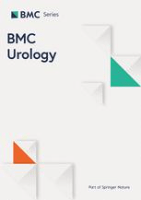
BMC Urology
Exploring the Frontiers of Urological MedicineBMC Urology is a premier open-access journal dedicated to advancing research in the field of urology, reproductive medicine, and miscellaneous aspects of medicine. Published by BMC since 2001 and based in the United Kingdom, this journal provides a platform for researchers, clinicians, and students to disseminate their findings and explore the latest innovations and advancements within these vital fields. With a notable impact factor and categorization in the Q2 quartile for various categories of medicine, BMC Urology stands as a reputable source, ranking 51st out of 120 in Urology and 44th out of 90 in Reproductive Medicine according to Scopus metrics. The journal fosters knowledge sharing through its open-access model, ensuring that research is accessible to all. As it converges from 2001 to 2024, BMC Urology continues to play a crucial role in shaping the landscape of urological research and providing invaluable insights into clinical practices.
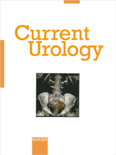
Current Urology
Exploring the Frontiers of Urology and Reproductive HealthCurrent Urology, published by Lippincott Williams & Wilkins, is a leading journal dedicated to advancing the fields of urology, oncology, and reproductive medicine. With an ISSN of 1661-7649 and E-ISSN of 1661-7657, this journal has established itself as a valuable resource for researchers, practitioners, and students alike, providing peer-reviewed articles that contribute to the ongoing discourse and development of these critical specialties. Operating out of the United States, Current Urology ranks in the third quartile for oncology, reproductive medicine, and urology, reflecting its importance in the medical community. The journal’s focus on innovative research and clinical practice allows it to bridge gaps between theoretical understanding and practical application, enhancing patient care and outcomes. Although currently not an open-access journal, it offers a wealth of insights and findings that underpin contemporary urological practices and research. In an evolving medical landscape, Current Urology remains an essential platform for disseminating knowledge and fostering collaboration among experts in the field.

Breast Cancer
Exploring the latest in breast cancer science and care.Breast Cancer is a prestigious peer-reviewed journal published by SPRINGER JAPAN KK, specializing in the multifaceted domains of oncology and medical pharmacology. With an impressive impact factor and recognized within the Q1 category in multiple areas, including Medicine (miscellaneous), Radiology, and Nuclear Medicine and Imaging, this journal serves as a fundamental resource for cutting-edge research and clinical advancements in breast cancer treatment and care. Its indexed presence in renowned databases like Scopus further affirms its significance, ranking 56th in Radiology and 60th in Pharmacology. The journal aims to bridge the gap between clinical practice and scientific research by publishing original articles, reviews, and case studies that enhance understanding and improve patient outcomes. With converged content available from 1994 to 2024, the journal is dedicated to fostering innovative research while engaging a global audience of researchers, clinicians, and students passionate about tackling breast cancer challenges.